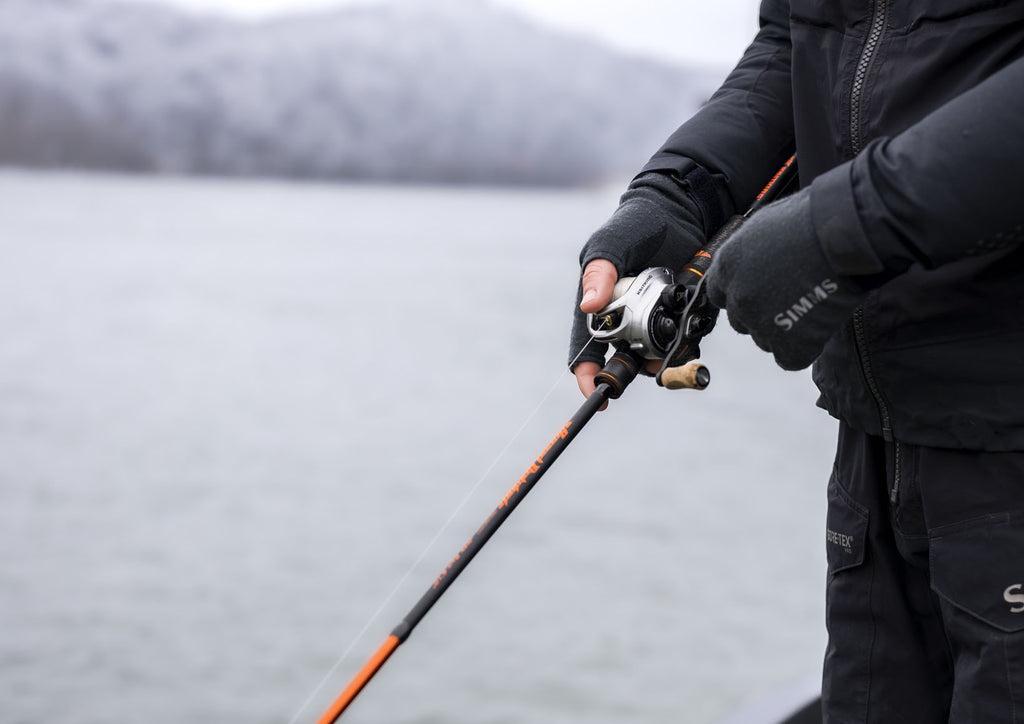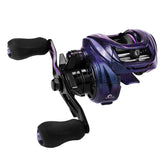
How to Cast a Baitcaster
So, you are ready to use your first baitcaster! There are plenty of videos of professional anglers flipping, pitching and skipping baits with ease. There are also plenty of anglers showing their control and precision by recording trick shots. Is it very difficult in the beginning, many anglers will bird nest their line to the point of having to cut it out of the reel. A huge bird’s nest is what I used to call a “Day Ender” as it would be so bad that I would have to completely stop fishing for the day. I know that I still mess up at times and have huge bird nest. It can be a little overwhelming at first but with a little practice, set-up and coaching you can cast like a pro in no time.
Step 1

The Spool tension knob is very overlooked by a lot of anglers. I see a lot of “I keep backlashing” or “I never have trouble but, this new reel is horrible”. I reply “adjust your spool tension knob and keep your thumb on the spool”. I promise that normally fixes the problem. Once your bait is tied and hanging off the rod, It is time to set the spool tension. The spool tension is different from your braking system. In fact, your reel has three ways of stopping the spool. One is your drag, then your braking system and then your spool tension knob. Your spool tension knob is there for fine tuning how much line comes off your spool. To set it correctly, loosen or tighten it while engaging the reel into a free spool. Watch how fast or slow the bait falls. You want the bait to fall about medium speed. It shouldn’t drop fast or not drop at all. If you are new to using a baitcaster, I recommend tightening your spool tension to where the bait falls very slowly.
Step 2

Setting your brakes. Your braking system is in charge of regulating the rotation of the spool while casting. The higher the setting on your braking system, the more resistance it will apply to the reels spool. The braking system is either located on the backplate of the reel or on the spool itself. There are two types of braking systems, centrifugal and magnetic. A magnetic system has the brakes on the side plate of the reel normally with numbers and a dial to indicate the brake setting. Centrifugal brakes are on the spool themselves. Remove the side plate to expose the spool and the brakes should be there on the spool. I have used reels that have a dial on it and a lot of higher end reels have small switches that Any beginner should start off with more brakes on to get a feel for the way the reel acts. As you get more comfortable with the reel, you can back off the brakes. Set the brakes to about half as a good starting point.
Step 3

Setting the drag system is fairly easy. The drag is located under the reels handle. It is the metal star located under the handle. The drag will regulate the tension placed on the line when fighting a fish. The more you tighten a drag, the harder it is for a fish to run and peel off any line. If you are running very heavy fishing line and using a technique like frogging, pitching and flipping, then it is definitely best to lock the drag down so the fish cannot run during a fight. If you are using lighter line on a finesse technique it is not a good idea to lick the drag down. That is because to allow the fish to have a little play. If the fish takes off hard and your drag isn’t set correctly, you will snap your line and lose that fish. Some drag systems click when tightening or loosening but a lot do. I personally do not have preference but I can see the benefit in having one that clicks.
Step 4

Now that your spool tension knob, brakes and drag is set, you are ready to cast. Engauge the free spool on the reel while placing your thumb on the corner to stop the spool and the bait from falling. Allow about 12 inches of line between the rod tip and the bait. Slowly but in one fluid motion, start the movement of your cast. To cast, simply release some pressure from your thumb on the reel but do not take your thumb completely off. If you take it off completely, it will definitely bird’s nest. This part takes the most practice over everything. Knowing how much pressure to apply with your thumb is something that only comes with experience. Casting very hard is also something that is going to get in you in a world of trouble. The harder you whip the rod, the faster the lure will cast. Even if everything is set properly you have to keep the right amount of pressure. Remember to have a fluid smooth cast to ensure you have your skills down before bomb casting your favorite bait.
Conclusion
The number one thing to do when trying to figure out how to cast a baitcaster is practice. Time with your reel is something that no amount of research can replace. Even some day I have trouble still and, on those days, I tighten down on the spool tension knob to where the bait barely falls. As I get more comfortable, I will back off on the spool tension if I need to get more distance on my cast. Remember to always change your tension knob to the bait that you are using as the weights of baits and lures varies. Brakes should be set to a comfortable level and start at about half. Set your drag properly so you don’t loose the fish of a lifetime. Now get out there and practice!













